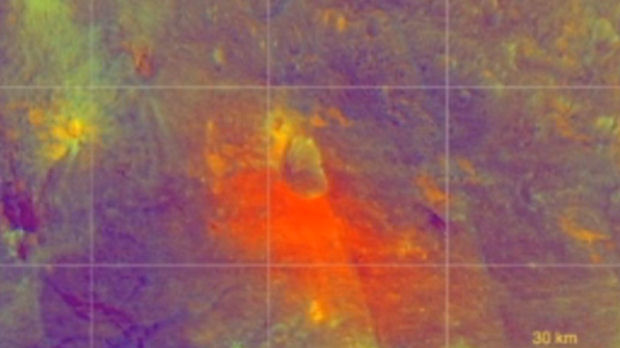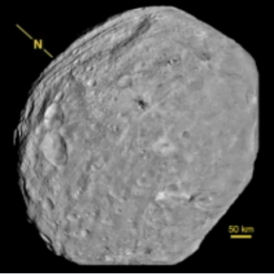Vesta asteroid pictures almost show ‘another world’
As Nasa releases new images from space of the asteroid Vesta, an astronomer tells Channel 4 News why getting up close and personal with the giant rock is so significant.
Nasa‘s Dawn spacecraft, which is in orbit around the 330-mile wide Vesta asteroid, has sent back colour images of the surface of the rock.
It has already sent black and white pictures and next week the probe will also start collecting scientific data about Vesta, when it is just 1,700 miles from the surface.
Dawn’s Principal Investigator, Christopher Russell, said they had not imagined the beauty and detail of the new images, which have huge potential to explain the solar system’s origins.

“It’s really insightful into this building block of the early solar system. It’s really a beautiful and exciting small world sitting there in the asteroid belt,” he said.
The Dawn spacecraft has travelled 1.7bn miles to reach Vesta, which is the second biggest asteroid in the belt between Mars and Jupiter.
Dr Robert Massey of the Royal Astronomical Society told Channel 4 News there were several reasons why astronomers and members of the scientific community are excited about the information being sent back by Dawn.
Read more on space travel: what next for the final frontier?
“It can tell us what things were like four and a half billion years ago, about the time the Earth was formed,” he said.
“Most bodies in the solar system formed at about the same time and although Vesta has lost a chunk of its surface – you can see the crater – it gives us an insight into how things were early on, and how our world was formed, and that’s why there’s excitement about the mission.

‘A world in its own right’
Dr Massey said the size of Vesta – its surface area is twice that of California – also made it an interesting asteroid to study, as well as the internal processes it had gone through since formation.
“Vesta is on the threshold of being a world in its own right,” he said.
“It’s still tiny compared with the Earth or the moon. But asteroids are basically a failed planet – in this case because of the gravity of Jupiter. So we’ve sent probes to smaller objects but this is almost like sending a probe to another world again after Mercury and Neptune.
“The bigger something is, within reason, the rounder it gets, so it starts to look more like a world than a boulder. That’s why it’s interesting – it’s a world in its own right, it’s the first time we’ve sent a space probe there and we’re expecting to see new things.”
After it finishes inspecting Vesta, the probe will move on to the Ceres asteroid by 2015.
-
Latest news
-
FactCheck: three promises Rishi Sunak has broken

-
FactCheck: three promises Keir Starmer has broken

-
How Sudan’s Frankenstein’s monster led to war that threatens to destroy country

-
‘Rishi Sunak has learned nothing from Liz Truss’, says Rachel Reeves1m

-
‘Reform UK will become the voice of opposition’: Nigel Farage2m

-




